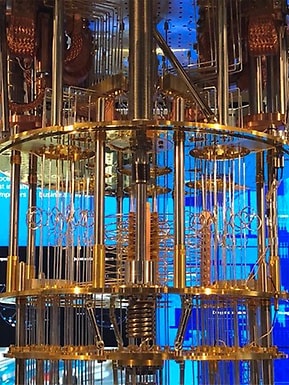Picture a new, incredibly powerful race car that can accelerate at an unheard-of speed right out of the gate, leaving the competition in the dust. But that velocity and power come at a price. The driver can only keep the machine under control for a few short moments before it veers off course and runs off the track, unable to complete a full lap let alone a race.
This scene sums up nicely where things stand with the latest and most promising type of computing out there: quantum computing. It’s still a nascent technology with its own evolving set of hardware and software that scientists and engineers are trying to understand and master. But they hope that in a few years’ time quantum computing will be able to solve problems that would even take a state-of-the-art supercomputer hundreds or thousands of years to crack. It could become the best way to discover new, more efficient battery technology, simulating aerodynamic shapes for better fuel efficiency and a smoother ride, or to optimize manufacturing processes with myriad variables.












